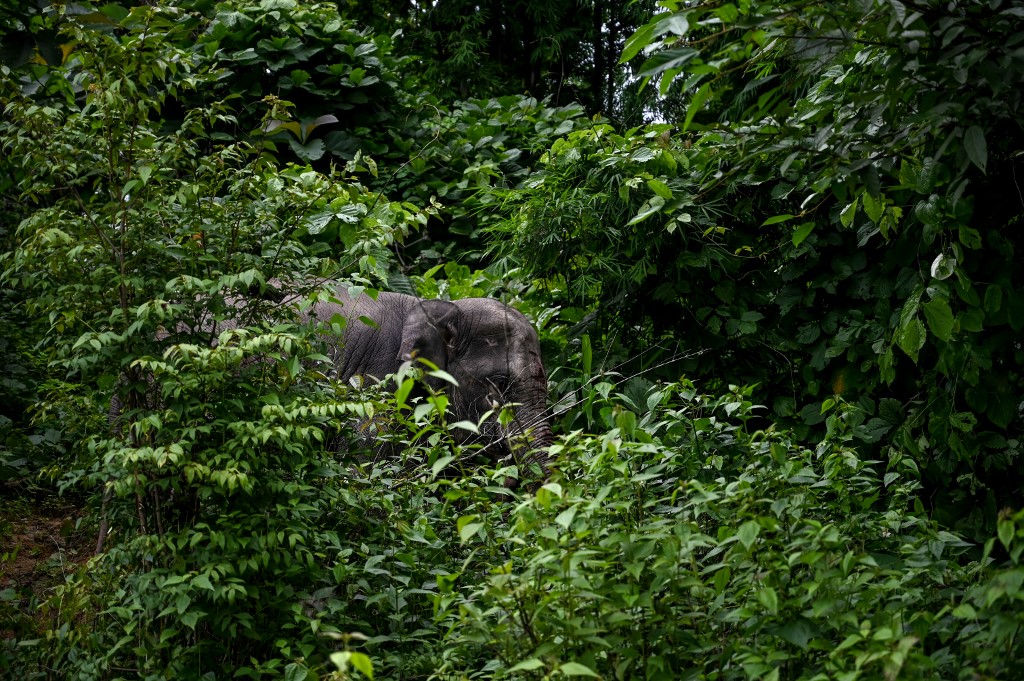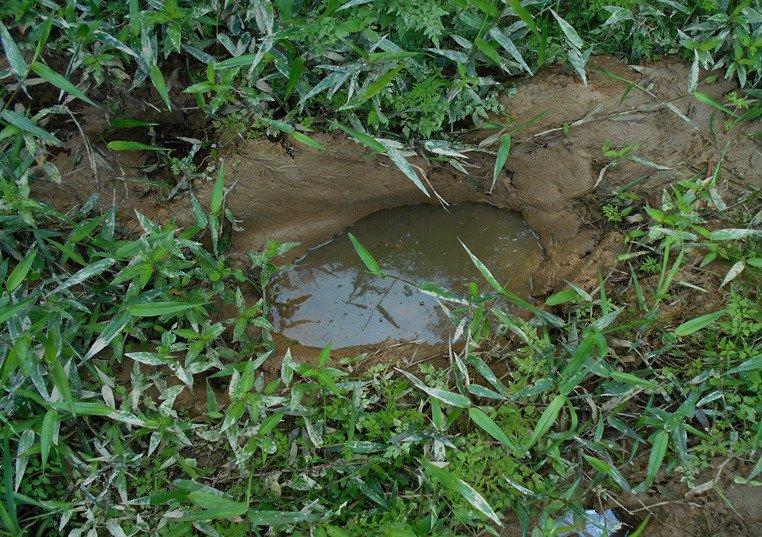
While wandering through northwestern Myanmar in 2016, a group of scientists stumbled on hundreds of huge tracks in the ground. According to a new paper in the journal Mammalia, these footprints, made by Asian elephants, have a lasting impact. Even when the giants that made them are long gone, the tracks serve as a magical birthplace for the frogs of Sagaing region.
During the rains, Asian elephants graze on the seasonally flooded wetlands in Htamanthi Wildlife Sanctuary. Months later, the ecosystem changes back to dry grasslands, but some of the footprints remain, trapping rainwater and turning into stable puddles. Here, researchers discovered tiny, squiggly creatures, swimming near bundles of small translucent orbs containing little dark dots floating on the surface: frog egg masses and tadpoles.
“This is the first report of anurans [frogs and toads] using water-filled tracks as egg-laying sites,” said study co-author Thomas Rainwater, a scientist with Clemson University, adding that the discovery was made “purely by chance” while the team was doing other fieldwork.
What the elephants left behind proved to be more than just another breeding site for frogs—their footprints became temporary homes for newborns during the dry season when alternative breeding grounds were nowhere to be found. Perhaps just as importantly, the footprints provided a habitat wholly safe from predators such as fish.
The series of elephant ponds also created “stepping stones” that frogs can easily hop across to connect populations together, increasing dispersal distance and gene flow. The study suggests these tracks can persist for more than a year, serving as an ideal place for tadpoles to grow from eggs to adults. The researchers did not identify what species were using the elephant puddles.
“Although small, [frogs] can be—and should be in most healthy ecosystems—very abundant, and have an important role in energy flows, nutrient dynamics and food webs,” said Jodi Rowley, the curator of amphibian and reptile conservation biology at the Australian Museum and the University of New South Wales. “When we lose frogs from an ecosystem, the impacts are widespread and long-lasting.”
The discovery reveals more about the role of Asian elephants as “ecosystem engineers.” These are animals that have a massive impact on their ecosystem and the lives of other species. Through browsing, trampling, seed dispersal, and producing piles of dung, elephants shape and change the landscape, producing new habitats and destroying others. Their impacts ripple down to smaller scales, enhancing biodiversity among other plants and animals by opening gaps in forest canopies and creating refugia for small mammals and lizards.
According to Rainwater, wallows created by water buffaloes (Bubalus bubalis) and wild pigs (Sus scrofa) also provide habitats for frogs in the region.
“The connections between different wildlife are often unexpected!” Rowley said.
Researchers have already examined more thoroughly the ecosystem services of African savanna elephants (Loxodonta africana) and forest elephants (L. cyclotis), according to Steven Platt, the lead author of the study and associate conservation herpetologist with the Wildlife Conservation Society’s Myanmar program.
“Studies are still urgently needed on the role of [Asian elephants] as ecosystem drivers, especially in the light of rapid decline of these large fauna,” he said.
Living in one of the regions with the highest relative deforestation rates in the world, the frogs and elephants of Southeast Asia both face habitat destruction and worsening climate change impacts.
Southeast Asian frogs are also threatened by overharvesting as well as introduced disease like chytridiomycosis, meanwhile Asian elephants face poaching for their ivory and skin for traditional Chinese medicine. They are also killed in human-elephant conflicts.
“When you lose one species, you may be unknowingly affecting others, which is why protecting intact ecosystems with full assemblages of wildlife is so important,” Platt said in a press release.
This article was first published in Mongabay.


